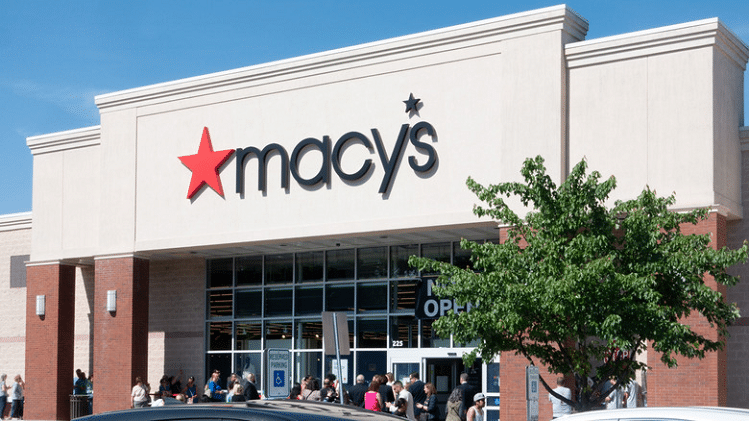Iconic Retailer Macy’s Store Closures: A Legacy in Transition

For decades, Macy’s has stood as a symbol of American retail strength—synonymous with Thanksgiving Day parades, towering city storefronts, red star logos, and multi-level department stores in nearly every state. The name evokes nostalgia and national pride, with millions having fond memories of shopping trips, wedding registries, and seasonal sales inside the familiar brick-and-mortar locations. However, in recent years, that image has changed dramatically. The iconic retailer Macy’s store closures have become a major talking point in retail and economic circles across the country. What was once a stable, ever-growing chain now finds itself shuttering hundreds of locations, prompting concern and analysis. Why is this happening? What does this mean for the future of traditional department stores?
More than just business decisions, these closures symbolize a much broader evolution in how Americans shop, live, and interact with brands. Macy’s shift marks the end of an era, but also the beginning of a strategic repositioning that aligns with 21st-century consumer behavior. In this article, we delve into the multi-layered reasons behind the closures, explore the economic and social implications, and examine what lies ahead for Macy’s and retail in general.
The Bold New Chapter: A Calculated Change in Direction
The news of Macy’s closing stores may seem drastic, even tragic, to loyal shoppers—but it’s not a knee-jerk reaction. This is a calculated shift, years in the making. It reflects the pressures of digital disruption and the company’s long-term vision to remain competitive. Rather than allowing the weight of tradition to crush it, Macy’s leadership has opted for bold transformation. As of 2024, Macy’s confirmed its plan to close approximately 150 underperforming locations by 2026, focusing instead on smaller, more agile store formats and strengthening its e-commerce presence.
This new chapter is being executed under the company’s “Polaris” strategy—a long-term blueprint that intends to modernize Macy’s, bring about digital efficiency, and focus resources on locations and channels with higher profitability. The iconic retailer Macy’s store closures closures, while painful, free up capital for investment in technology, logistics, and customer personalization. Macy’s isn’t disappearing; it’s evolving. Just as it has reinvented itself throughout its 160+ years—from a dry goods store to a national chain—Macy’s is now shifting from a traditional department store to a digitally enabled, experience-driven retailer with a focus on luxury, relevance, and sustainability. It’s a bold step, not a retreat.
Appreciating the Motives Behind the Closes
Understanding the motives behind Macy’s store closures involves peeling back layers of market data, consumer trends, and internal company performance. The closures didn’t arise from a single problem but from a culmination of interconnected pressures that, over time, made the traditional Macy’s model unsustainable.
Let’s break down the five core drivers of this historic decision.
Falling Foot Traffic
Shopping malls across the United States are witnessing a continuous decline in foot traffic. Many Macy’s stores are located in these very malls that iconic retailer Macy’s store closures once were community hubs. With fewer people visiting malls, anchor stores like Macy’s no longer generate the consistent daily footfall required to justify their size and expense. The pandemic further exacerbated this decline, pushing consumers toward safer, more convenient online shopping experiences. In locations where stores were previously thriving, foot traffic dwindled, leaving enormous square footage underutilized.
Competition in E-Commerce
No conversation about retail closures can ignore the explosive growth of e-commerce. Amazon, Walmart.com, and niche online brands have changed the landscape. Macy’s has invested in its digital infrastructure, but it was late to fully capitalize on this revolution. Consumers have grown accustomed to the convenience, speed, and pricing benefits that online shopping offers. For a time, Macy’s physical presence served as a competitive edge, but when convenience began to outweigh tradition, the edge dulled. The effort to catch up with digital-first competitors required a shift in priorities, starting with divesting from costly real estate.
Changing Customer Conduct
Modern consumers want more than a place to shop—they want experiences, personalization, sustainability, and seamless digital integration. Macy’s struggled to adapt quickly to these demands. Shoppers now expect personalized recommendations, quick online checkouts, digital receipts, flexible return policies, and immersive in-store tech—all of which require substantial investment. Traditional department store layouts, once a sign of variety and abundance, became overwhelming and outdated. Today’s customer behavior is intentional and efficient, and Macy’s had to adapt or be left behind.
Changing Running Costs
Operational costs have increased significantly across retail, but department stores like Macy’s face uniquely large expenses. These include high rent for prime real estate, wages for large staff teams, inventory holding costs, and energy expenses. It is no longer financially viable to keep large stores open in places with little foot traffic. Closing underperforming locations is a strategic way to cut losses and reinvest savings into scalable ventures. The decision, while difficult, aligns with a broader financial restructuring aimed at preserving the company’s longevity.
Geographic Reversing
Urban migration patterns and demographic shifts are changing where people live, work, and shop. Some Macy’s stores are in locations that no longer reflect current or future population trends. iconic retailer Macy’s store closures Macy’s store distribution made sense decades ago, but today, many of those locations are not economically viable. This geographic mismatch, combined with the cost of modernizing older buildings, further accelerated the decision to pull back from certain regions.
Effects on Local Economies and Workers
Store closures don’t just impact Macy’s bottom line—they ripple through communities. For towns where Macy’s served as a major employer and commercial anchor, its departure can mean job losses, reduced mall traffic, and local economic slowdown. Small businesses nearby often rely on anchor stores like Macy’s to draw in customers who might also visit their shops or restaurants. The shutdowns thus affect not only former employees but also the wider ecosystem.
Employees face uncertainty, with layoffs affecting retail workers, warehouse staff, and mid-level managers. While Macy’s has offered severance, job assistance, and internal transfers where possible, the reality is that many workers must start over in a competitive job market. Economically, municipalities may see decreased tax revenues and commercial real estate devaluation. Emotionally, these closures sever cultural ties and community routines that have existed for generations.
![]()
Digital and Luxurious Focus of Macy
While closures may appear to signal decline, Macy’s is refocusing its identity—leaning heavily into digital innovation and upscale branding. Macy’s is spending billions to create a smooth omnichannel presence with their “Polaris” strategy. The goal is to make the online Macy’s as iconic as its physical stores once were. Features like curbside pickup, mobile app enhancements, and AI-powered customer service are part of this transformation.
Additionally, Macy’s is moving toward more luxury-oriented offerings, especially within its high-performing stores. Curated collections, premium product lines, and partnerships with designer brands are expanding. Their private label strategy, featuring in-house brands like INC International Concepts and Bar III, aims to deliver stylish, exclusive apparel with better profit margins. This new focus may not serve every customer demographic, but it positions Macy’s as a modern, upscale brand built for longevity.
A Retail Historical Change
Macy’s closures are not isolated; they are part of a historic shift in American retail. Once-dominant department stores like Sears, JCPenney, and Lord & Taylor have also downsized or disappeared entirely. The old model of anchoring large malls with expansive stores is no longer viable in most regions. The entire retail industry is grappling with how to balance physical presence with digital efficiency.
This shift mirrors what happened in other industries—newspapers moving online, taxis disrupted by rideshares, and landlines replaced by smartphones. Just as these sectors evolved, so too must retail. Macy’s is not alone in its struggle; it’s a high-profile example of a necessary evolution. The shift represents a long-term correction to outdated business practices in favor of flexibility, innovation, and customer-centric thinking.
Strategic Store Clues, Selective Accessible Doors
Macy’s isn’t closing stores indiscriminately—it’s being strategic. Remaining stores are now carefully chosen based on location performance, population density, digital synergy, and growth potential. Some urban flagship stores and suburban hubs will stay open and even receive renovations, while others will transition into new formats.
One such idea is Market by Macy’s, a smaller-format store with contemporary layouts, streamlined services, and locally relevant items. These locations are meant to appeal to younger demographics and communities that prioritize convenience over scale. This concept allows Macy’s to maintain physical touchpoints with customers without the costs of traditional department stores. Accessibility and agility are now central to Macy’s retail blueprint.
The Function of Customer Experience
It is impossible to overestimate the importance of the customer experience in Macy’s approach. Traditional department stores failed not because of inventory, but because the experience declined. Macy’s now aims to reignite that spark through personalized shopping, efficient returns, loyalty programs, and cross-channel integration. The idea is to deliver value not just in products, but in how they are discovered, tried, purchased, and returned.
Customer experience is also being reimagined through in-store tech: smart mirrors, scan-and-go, mobile checkout, and even augmented reality tools. By bridging the gap between online and physical, these inventions improve the in-person experience. Macy’s loyalty program, Star Rewards, is also evolving to include more personalized offers and multi-platform benefits. These are not gimmicks—they are part of a comprehensive effort to win back relevance in a highly competitive landscape.
Reactions in the Public and Markets
The public reaction to Macy’s closures has been mixed. Many shoppers express sadness and nostalgia, remembering trips with parents or annual shopping sprees. For older generations, Macy’s closures feel like the erosion of cultural tradition. However, younger shoppers often say they rarely visited Macy’s in recent years and now rely on digital or boutique alternatives.
In financial markets, reactions have been more measured. Macy’s stock has faced volatility but shows signs of long-term confidence from analysts who see potential in its pivot strategy. Investors understand that the closures, while dramatic, are part of a broader financial health strategy, not a sign of collapse. Some critics argue the move is too little too late, while others see it as essential housekeeping for future stability.
The Direction Ahead
Looking forward, Macy’s must prove that its bold transformation is more than a defensive retreat. The company needs to make its digital platforms irresistible, its in-store experiences memorable, and its brand positioning unshakable. Success will be measured not only in quarterly profits but in customer loyalty, employee engagement, and long-term brand equity.
The demise of the venerable Macy’s stores represents a sea change. What happens next could shape the future of retail for decades. Will Macy’s rise anew as a lean, tech-savvy lifestyle brand? Or will it remain a cautionary tale of missed digital opportunities? That answer depends on how well the company listens, adapts, and executes in the next five years.





